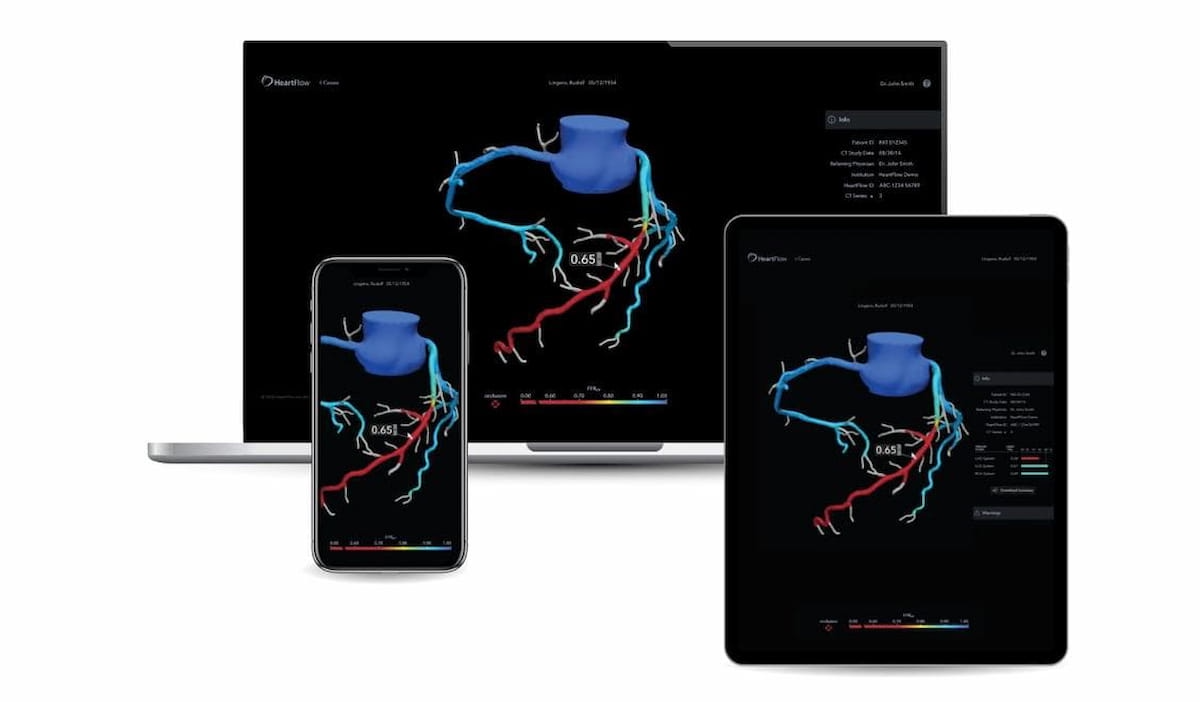HeartFlow Gets New CPT Reimbursement Code for CT-Based Fraction Flow Reserve Analysis
The new Category I CPT code reportedly facilitates a nearly 7 percent increase in reimbursement for use of the CT-based fractional flow reserve assessment of coronary blood flow.
The American Medical Association (AMA) has issued a new Category I Current Procedural Terminology (CPT) code for the use of HeartFlow’s Fractional Flow Reserve CT (FFRCT) Analysis, which provides artificial intelligence (AI)-enabled assessment of coronary blood flow based on computed tomography (CT) scans.
The Category I CPT code, which went into effect on January 1, replaced four previous Category III CPT codes utilized for FFRCT, according to HeartFlow. The company said the new code will increase reimbursement for FFRCT Analysis by nearly seven percent in hospital settings.
In a recently issued guidance for 2024 changes to CPT codes, the AMA noted the new Category I CPT code for FFRCT Analysis can be utilized for capturing non-invasive estimates of coronary FFR values within the coronary tree and assessment of multiple and sequential lesions.
A newly issued Category I CPT code may increase reimbursement by nearly seven percent in hospital settings for HeartFlow’s Fractional Flow Reserve CT (FFRCT) Analysis (shown above). (Image courtesy of HeartFlow.)

The AMA guidance also notes CPT reimbursement coverage of ascertaining disease burden location and determining the lesion with the greatest hemodynamic significance in order to facilitate targeted treatment interventions, according to HeartFlow.
“This recognition emphasizes the value and importance of FFRCT Analysis to help clinicians accurately diagnose CAD in patients. Better reimbursement for hospitals leads to improved accessibility to this technology, which is a win for everyone involved, most notably patients,” noted John Farquhar, the CEO of HeartFlow.
Meta-Analysis Shows Merits of AI with CTA Detection of Coronary Artery Stenosis and Calcified Plaque
April 16th 2025Artificial intelligence demonstrated higher AUC, sensitivity, and specificity than radiologists for detecting coronary artery stenosis > 50 percent on computed tomography angiography (CTA), according to a new 17-study meta-analysis.
New bpMRI Study Suggests AI Offers Comparable Results to Radiologists for PCa Detection
April 15th 2025Demonstrating no significant difference with radiologist detection of clinically significant prostate cancer (csPCa), a biparametric MRI-based AI model provided an 88.4 percent sensitivity rate in a recent study.